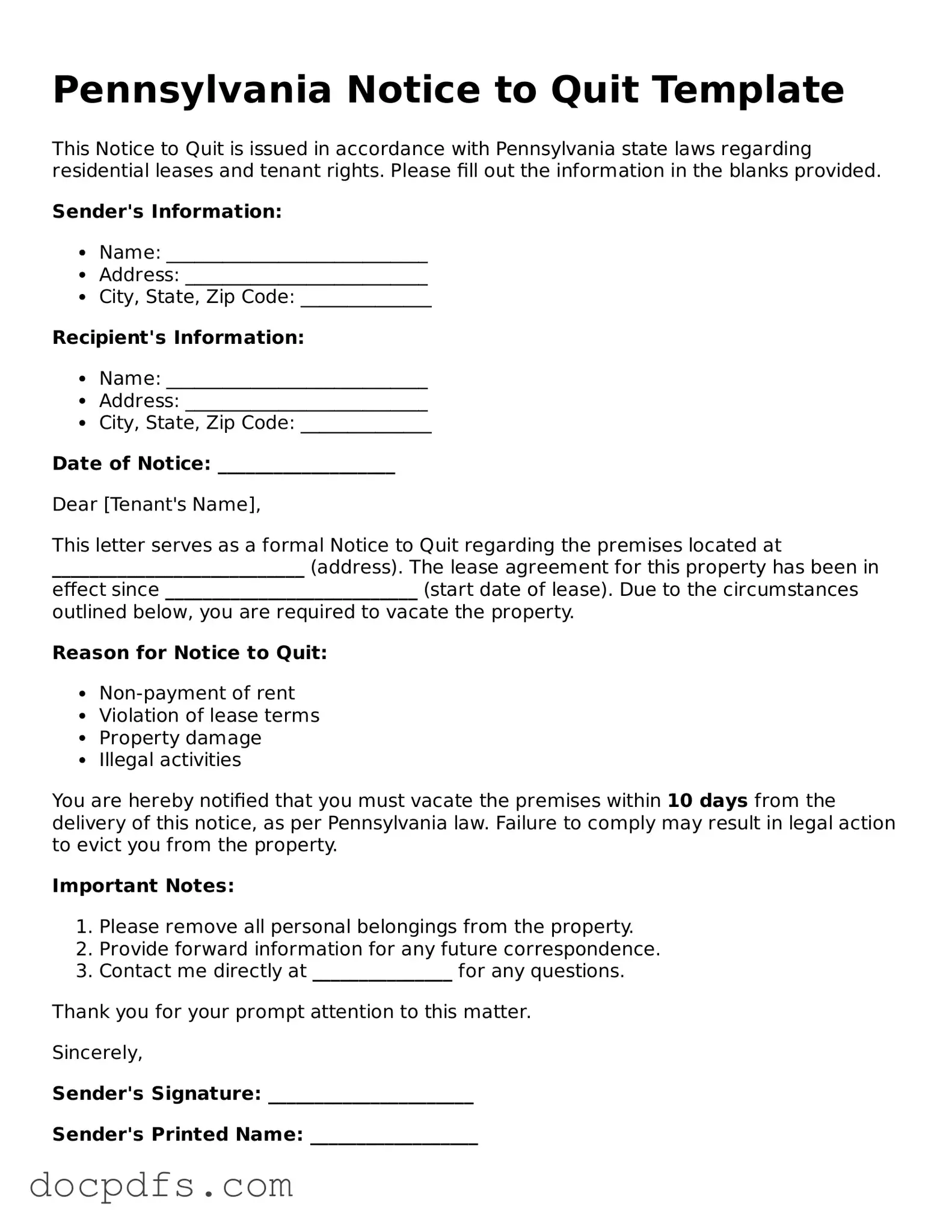The Pennsylvania Notice to Quit form is an important document in the landlord-tenant relationship, serving as a formal notification that a tenant must vacate the rental property. This form is typically used when a landlord seeks to terminate a lease agreement due to various reasons, such as non-payment of rent or lease violations. It outlines the specific time frame within which the tenant must leave, ensuring compliance with state laws. Understanding this form is crucial for both landlords and tenants, as it helps clarify their rights and responsibilities. The notice must include essential information, such as the tenant's name, the address of the rental property, and the reason for eviction. By following the proper procedures outlined in the Notice to Quit, landlords can protect their interests while providing tenants with a clear understanding of their situation. This document plays a vital role in the eviction process, making it essential for anyone involved in a rental agreement in Pennsylvania to be familiar with its contents and implications.
